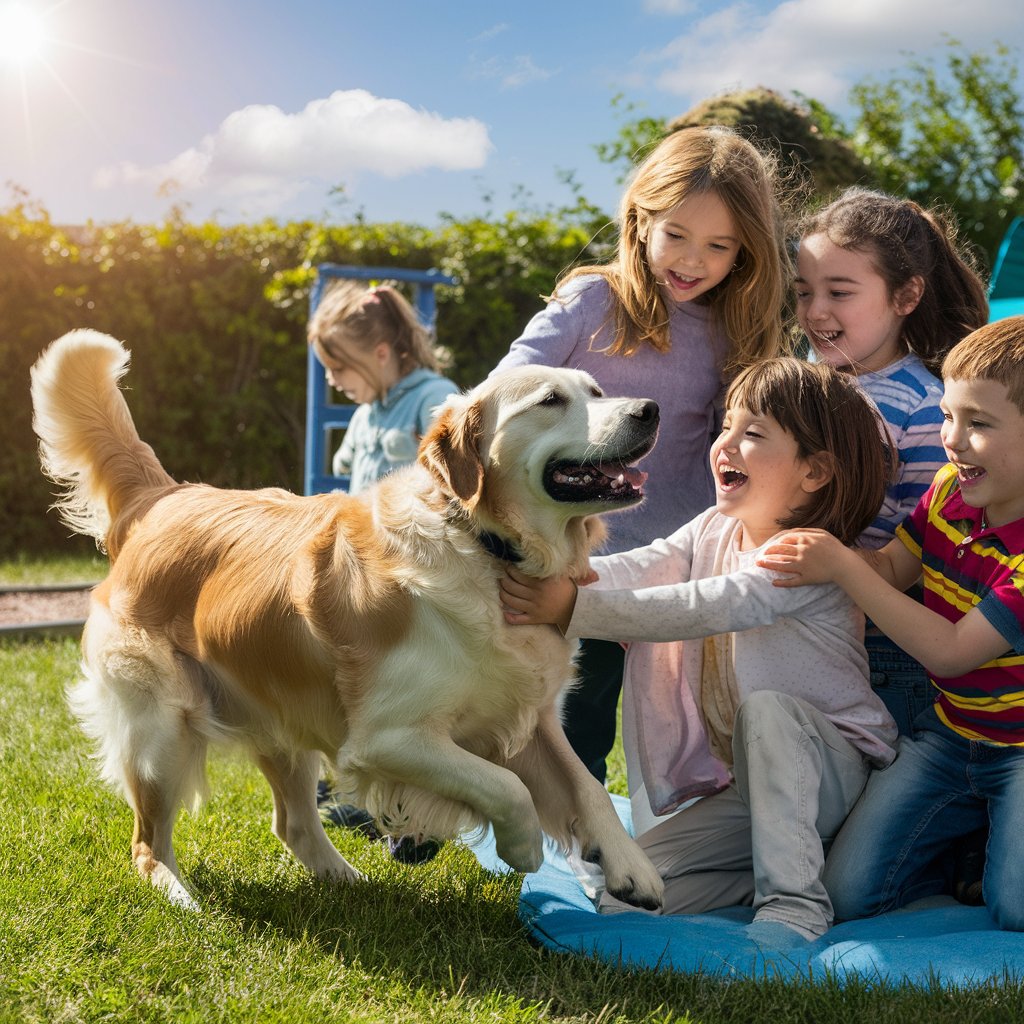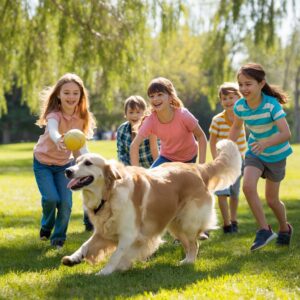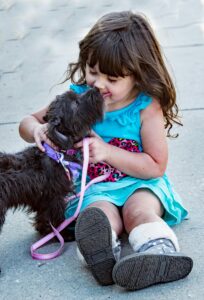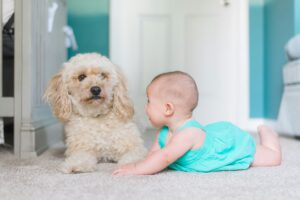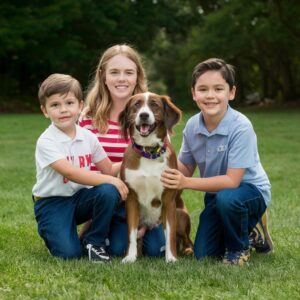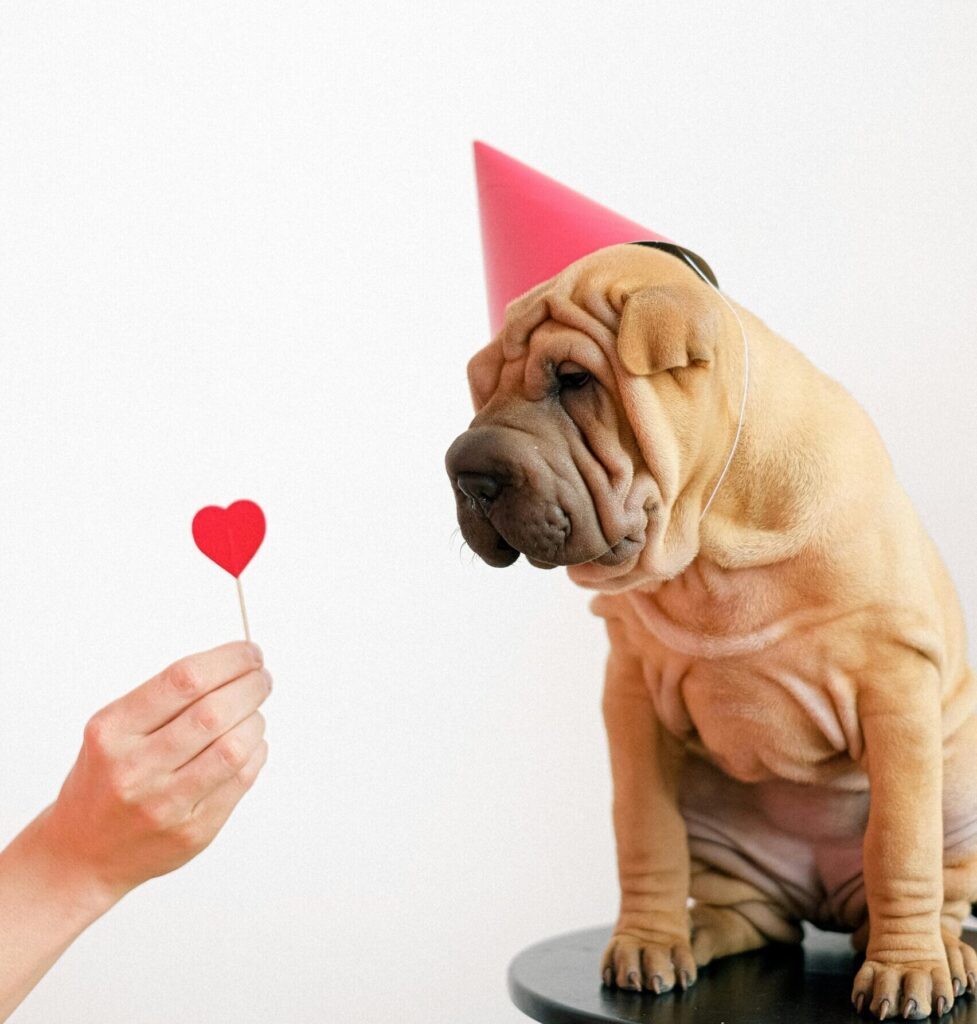It happens that the news brings us to know of unfortunate accidents that have occurred between dogs and children , where unfortunately, most of the time, the problem is poor management of both, by adults
Let’s see what mistakes we shouldn’t make if we want our children and our four-legged friends to be safe.
1- Instructions for Use
- Choose the right dog for your family. Not all dogs are good with children. Some breeds are more likely to be aggressive or fearful of children, while others are more tolerant and patient. Do your research and choose a breed that is known for being good with kids.
- Socialize your dog with children from a young age. The best way to ensure that your dog is good with children is to socialize them together from a young age. Let your dog meet and play with children of all ages and sizes. This will help your dog to learn how to interact with children in a positive way.
- Teach your dog basic obedience commands. Obedience training will help your dog to learn how to behave around children. It will also give you the ability to control your dog’s behavior if necessary.
- Supervise all interactions between your dog and children. Even the best-behaved dogs can have accidents or act out of fear if they’re not properly supervised. Always supervise all interactions between your dog and children, and never leave them alone together.
- Set boundaries and expectations for both your dog and your children. It’s important to set clear boundaries and expectations for both your dog and your children. This will help to prevent any misunderstandings or accidents.
- Be patient and consistent. It takes time for dogs and children to learn how to live together. Be patient and consistent with your training, and you’ll eventually have a happy and harmonious household.
2- Instructions for Elders to Care for Children with Dogs
If you’re an elder who is caring for children with dogs, there are a few things you can do to make the experience more positive for everyone involved.
-
Be aware of your dog’s body language.
Dogs communicate through their body language, and it’s important to be able to interpret their signals. If your dog is showing signs of aggression or fear, it’s important to remove them from the situation immediately.
-
Teach your children how to interact with dogs safely.
Children need to learn how to respect dogs and how to behave around them. Teach them to never approach a strange dog without an adult present, and to never touch a dog without asking permission first.
-
Supervise all interactions between your children and your dog.
Even the best-behaved dogs can have accidents or act out of fear if they’re not properly supervised. Always supervise all interactions between your children and your dog, and never leave them alone together.
-
Be patient and consistent.
It takes time for children and dogs to learn how to live together. Be patient and consistent with your training, and you’ll eventually have a happy and harmonious household.READ TO UNDERSTAND YOUR DOGS
3- Additional Instruction for use
- We do not leave children and dogs alone
- We teach our children how to behave
- Let us never forget that the dog is not a human being
- Let’s not instill in our children the fear of animals,
- If we own a dog , let’s make him interact with children
We do not leave children and dogs alone
without supervision. Especially when the dog does not belong to us and therefore does not recognize our child as part of its pack. This applies to dogs of all breeds and sizes.
We teachour children how to behave
appropriately when interacting with Fido. For example, explaining that he should not be bitten, his fur or tail should not be pulled, he should not be disturbed when he is unwell or eating, he should not be bothered with screams and tugs. We teach our children that to become friends with an unknown dog , we must follow small precautions , such as first letting him smell our scent, carefully placing a hand near his muzzle, approaching from the side and never from behind.
Let us never forget that the dog is not a human being,
therefore it has a behavior specific to its species, it does not know physical or moral laws, except the rules imposed by the pack leader (its owner). Therefore, let us not pretend to know its every move in advance, defining it as “good” or “bad”, because even the apparently calmest dog , in a moment of danger (perceived by it as such), defends itself with the only weapon it has, namely its teeth.
Let’s not instillin our children the fear of animals,
in this case of dogs, for example by picking them up when one approaches, or by warning them repeatedly to be careful because it could bite them. A child who is terrified of a dog tends to scream and run as soon as he sees one and, as we said before, a dog has a different instinct than a human, which leads him to chase prey if stimulated. A child who runs away in panic can make the dog want to grab him, which is very dangerous and can lead to unpleasant consequences.
let’s make him interact with children
from an early age , teaching him what is allowed and what is not. If he tends to growl while our child plays with him, let’s scold him, even if the child is in the wrong and the dog is right, so that he always remembers not to do it, on every occasion. The dog needs rules , without them he finds himself in difficulty, so he won’t be offended if we force him to be gentle when approaching a child, especially in play.
Dogs and children can, and should, relate, respecting each other , under our guidance. Dealing with animals, and especially with dogs, is very good for both adults and children, who find in them a faithful and loving friend , even if of a different species.
[blockquote align=”Freya Stevee” author=”Let us never forget that the dog is not a human being[/blockquote]
Conclusion
Dogs and children can be a great combination, but it’s important to make sure that both parties are safe and happy. By following these instructions, you can help to ensure that your family has a positive experience with dogs.

